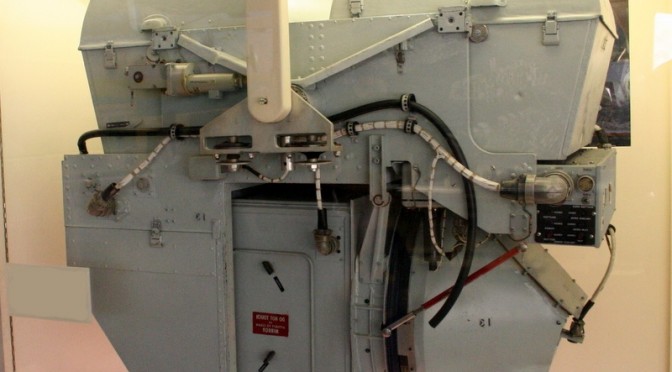Between 28 July and 3 August 2014, Offiziere.ch, the Facebook pages “Sicherheitspolitik” and Army HQ will hold another security policy contest with the support of KOG Schaffhausen, “Seidlers Sicherheitspolitik“, “Aussen- und Sicherheitspolitik“, #carbine and CIMSEC.
“Ipsa scientia potestas est!” – “knowledge (itself) is power!“. This English saying can be traced back to the philosoph Francis Bacon and alludes to the importance of (scientific) knowledge in the age of enlightenment. In another connection, this statement has grown in importance over time. Anyone with superior knowledge, who knows the intentions of others, has a clear advantage. Yet there are different methods of intelligence gathering. The least harmful form of intelligence gathering is also used on websites like the Next War blog or offiziere.ch: OSINT or Open Source Intelligence – the gathering of intelligence from publicly available sources. At the other end of the scale lies the comprehensive monitoring and retention of the communication streams of every citizen (data retention).
 This edition of our security policy contest is less about data collection mania and more about strategic intelligence gathering. This can, of course, also be done through the targeted interception of communications data (COMINT), but a variety of gathering methods may also be used. Thus, for example, even aircraft are loaded with high resolution cameras and other sensors. Such “spy aircraft” are still employed today. In 2005 one of these planes, which was probably operating in Iranian airspace, crashed. It could fly at a height of over 21,000 m (70,000 feet), which was originally supposed to protect it from detection and shooting down by air defence missiles.
This edition of our security policy contest is less about data collection mania and more about strategic intelligence gathering. This can, of course, also be done through the targeted interception of communications data (COMINT), but a variety of gathering methods may also be used. Thus, for example, even aircraft are loaded with high resolution cameras and other sensors. Such “spy aircraft” are still employed today. In 2005 one of these planes, which was probably operating in Iranian airspace, crashed. It could fly at a height of over 21,000 m (70,000 feet), which was originally supposed to protect it from detection and shooting down by air defence missiles.
Questions
• What spy plane is referred to?
• What is the technical term which refers to the gathering of information
from images and/or video recordings?
• In the image on the right, an important part of this aircraft can be seen.
What is it?
The (hopefully correct) answers should be sent to einsatz@offiziere.ch. The preferred prize can also be specified in the e-mail, although we cannot guarantee this.
Prizes
The prizes will be drawn from among the correct entries. They will first be drawn from among the entries for which all three questions have been answered correctly. If nobody manages this (hey! don’t disappoint me!), the draw will be made from the entries that have two correct answers.
2 x “Demokratie und Islam” von Cavuldak, Hidalgo, Hildmann und Zapf (gesponsert von Springer VS).
2 x The Lieutenant Don’t Know: One Marine’s Story of Warfare and Combat Logistics in Afghanistan by Jeffrey Clement.
2 x Jahrbuch Terrorismus 2013/2014 von Stefan Hansen und Joachim Krause.
1 x Die Wehrmacht im Stadtkampf 1939-1942 von Adrian E. Wettstein (gesponsert von Lukas Hegi).
1 x “Shadow Wars: Chasing Conflict in an Era of Peace” by David Axe.
1 x “Life Begins at Incoporation” by Matt Bors.
1 x “Poor Numbers: How We Are Misled by African Development Statistics and What to Do about It” by Morten Jerven.
1 x “Command and Control: Nuclear Weapons, the Damascus Accident, and the Illusion of Safety ” by Eric Schlosser.
1 x “Schottenfreude: German Words for the Human Condition” by Ben Schott.
1 x Civilian Warriors: The Inside Story of Blackwater and the Unsung Heroes of the War on Terror by Erik Prince (siehe auch “Sea Control 29 – Interview with Erik Prince“).
 The Center for International Maritime Security is pleased to announce our first annual Maritime Security Scholarship Essay Contest. In an effort to further our mission of spreading awareness of security issues impacting the ocean commons, CIMSEC is issuing a call for papers from secondary school students around the world. It’s time to put on your nautical caps and think, read, and write about maritime security. A broad range of paper topics are encouraged, but should exhibit an awareness and interest in maritime or naval affairs. Submissions will be judged on originality of thought, logic, and ability to demonstrate the importance of the chosen topic to maritime security.
The Center for International Maritime Security is pleased to announce our first annual Maritime Security Scholarship Essay Contest. In an effort to further our mission of spreading awareness of security issues impacting the ocean commons, CIMSEC is issuing a call for papers from secondary school students around the world. It’s time to put on your nautical caps and think, read, and write about maritime security. A broad range of paper topics are encouraged, but should exhibit an awareness and interest in maritime or naval affairs. Submissions will be judged on originality of thought, logic, and ability to demonstrate the importance of the chosen topic to maritime security.


 This edition of our security policy contest is less about data collection mania and more about strategic intelligence gathering. This can, of course, also be done through the targeted interception of communications data (COMINT), but a variety of gathering methods may also be used. Thus, for example, even aircraft are loaded with high resolution cameras and other sensors. Such “spy aircraft” are still employed today. In 2005 one of these planes, which was probably operating in Iranian airspace, crashed. It could fly at a height of over 21,000 m (70,000 feet), which was originally supposed to protect it from detection and shooting down by air defence missiles.
This edition of our security policy contest is less about data collection mania and more about strategic intelligence gathering. This can, of course, also be done through the targeted interception of communications data (COMINT), but a variety of gathering methods may also be used. Thus, for example, even aircraft are loaded with high resolution cameras and other sensors. Such “spy aircraft” are still employed today. In 2005 one of these planes, which was probably operating in Iranian airspace, crashed. It could fly at a height of over 21,000 m (70,000 feet), which was originally supposed to protect it from detection and shooting down by air defence missiles.

